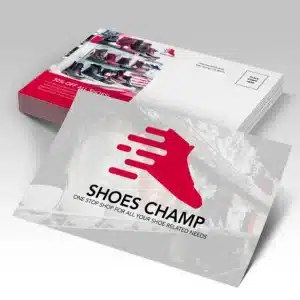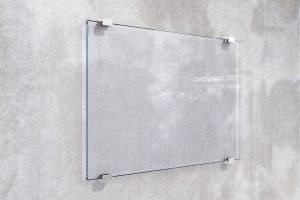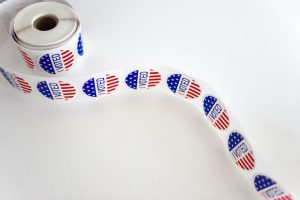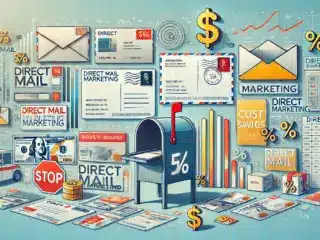Last Updated on November 20, 2024 by Carlos Alonso
Practical Branding Tips for Business Cards
Business cards play a vital role in establishing your brand identity when making a lasting impression. But what makes a business card genuinely effective in conveying your brand message? Is it the design? The choice of materials? Or perhaps the strategic placement of your personal details?
In this article, I will share valuable branding tips to help you design business cards that stand out from the crowd and leave a lasting impact on your recipients. From creative design ideas to branding strategies, we will explore various elements that can make your business cards a powerful tool for brand recognition.
Understanding the Role of Business Cards in Brand Recognition
Even after all these years business cards are still the most popular items we print. Its amazing how manydifferent options and new things people are doing with their cards. Business cards play a crucial role in brand recognition. As a physical representation of a brand, business cards provide an opportunity to make a lasting impression on potential clients and customers. Creating a sound business card that effectively represents your brand is critical to building brand awareness, effective networking and recall for potential clients.
A well-designed business card reflects the personality and values of your brand, leaving a positive impression on recipients. It is a tangible reminder of your brand, making it easier for potential clients to recall and connect with your business when they need your products or services. When you create business cards that are visually appealing and aligned with your brand identity, you establish a strong brand presence, which is crucial for small businesses.
Furthermore, business cards serve as a visual touchpoint for your brand, reinforcing your brand image and messaging. When people see your brand’s logo, colors, and other branding elements on your business card, they can easily associate them with your company. Consistency in brand elements across all marketing materials, including business cards, is crucial for maintaining brand identity and improving brand recognition.
To create good business cards that contribute to brand recognition, it is essential to consider the design and overall presentation. This includes using high-quality materials, selecting appropriate fonts and colors, and incorporating key branding elements aesthetically pleasingly. By strategically designing your business cards, you can effectively convey your brand’s professionalism, creativity, and unique selling points.
When thoughtfully designed, they become powerful tools for brand recognition. By creating visually appealing and cohesive business cards that reflect your brand’s identity, you can leave a lasting positive impression on your target audience and reinforce your brand presence and ultimately make more money!
The Power of Simplicity in Business Card Design
When it comes to designing a business card, simplicity is often underestimated. However, a clean and minimalistic design can be compelling and make a lasting impression on potential clients and customers. Here are some top tips for creating a visually appealing and effective business card using simple design elements:
Consider employing a business card maker tool to experiment with different designs and shapes, making your card stand out.
1. Focus on Essential Information
When designing your business card, include only the most essential information. This includes your name, job title, company name, phone number, email address, and website. Keeping the information concise and clutter-free ensures it is easily readable and memorable for recipients.
2. Choose a Clean Layout
Avoid overcrowding your business card with excessive design elements. Opt for a clean and organized layout that allows each component to breathe. Use white space strategically to draw attention to the essential details and make the overall design look more polished.
3. Limit the Color Palette
When it comes to colors, less is often more. Limit your color palette to two or three complementary colors that align with your brand. This creates a cohesive and professional look visually appealing to the eye. Remember, simplicity can be as impactful as a bold and vibrant design for creating a new business card.
4. Use High-Quality Fonts
Choose fonts that are clean, legible, and professional. Avoid using multiple fonts, which can create a chaotic and unprofessional look. Stick to one or two fonts throughout your business card to maintain consistency and enhance the simplicity of the design.
5. Incorporate Minimalistic Graphics
If you include graphics or icons on your business card, opt for minimalistic designs that align with your brand. These subtle touches can add visual interest without overwhelming the overall design. Remember to keep them simple and relevant to your business or industry. We concur that keep the images limited.
Simplicity is the key to effective business card design. By focusing on essential information, clean layouts, limited color palettes, high-quality fonts, and minimalistic graphics, you can create a visually appealing and impactful business card that represents your brand professionally. Remember, sometimes less is more, especially in graphic design for small business cards!!
Material and Finish: Conveying Quality through Your Business Card
Choosing materials and finishes plays a crucial role when creating a lasting impression with your business card. Your business card should look visually appealing and convey a sense of quality and professionalism. That’s why it’s important to consider options like silk coating, satin aqueous, matte coating, UV coating, spot UV, foil, and different card stocks to make your card stand out and reflect the quality of your small business.
Silk coating adds a smooth and luxurious touch to your business card. It gives a subtle sheen and enhances colors, making your design elements pop. On the other hand, matte coating provides a sophisticated and elegant finish, perfect for minimalistic and modern designs.
UV coating, especially spot UV, is a popular choice for adding a glossy and eye-catching effect to specific areas of your business card, such as your logo or essential elements. This creates a contrast that draws attention and leaves a memorable impression on recipients.
Consider adding foil to your business card if you want something more unique and distinctive. Foil can highlight specific design elements like your company name or logo, adding a touch of elegance and sophistication.
With the right combination of materials and finishes, your business card can become a powerful tool for promoting your brand, standing, and competition. Take the time to carefully select the materials and finishes that best align with your brand image and leave a lasting impact on anyone who receives your card.
Differentiating with Unique Business Card Shapes and Sizes
In business card design, thinking outside the box can make a lasting impression on potential clients and partners, adhering to innovative design principles. Differentiating your business cards with unique shapes and sizes is an excellent way to stand out from the crowd and showcase your creativity. This approach can make your card stand out.
One top tip for designing a unique business card is to consider the nature of your industry or profession. For example, if you are a florist, you can opt for a business card shaped like a flower or a die-cut design to mimic petals, making your card unique and memorable. This not only reflects your profession but also creates visual interest. Catdi Printing offers rounded corners or semi-rounded cards and they are pretty popular for various businesses.
Another creative business card design tip is to play with unconventional sizes. Consider square or circular cards instead of the standard rectangular shape to create a unique and memorable business card. These distinctive shapes catch the eye and make your business card memorable, adhering to creative design principles.
When experimenting with unique shapes and sizes, it is essential to balance creativity and practicality. Ensure that the shape or size doesn’t hinder the card’s usability, making it difficult for recipients to store or carry.
You can make a statement and leave a lasting impression by incorporating unique shapes and sizes into your business card design. Stand out from the crowd and showcase your creativity with an innovative and attention-grabbing business card.
Branding Tips for Business Cards: Elements that Make a Statement
When it comes to creating impactful business cards, incorporating key branding elements is crucial. These elements represent your brand and help build a strong visual impact on your recipients. In this section, I will discuss the critical branding elements that can make a statement on business cards and provide you with innovative ideas to elevate your business card branding.
1. Logos: Your logo is the face of your brand, and it should be prominently displayed on your business card. Ensure that your logo is high-resolution and perfectly represents your brand identity. This is crucial to make your card convey your professional image. A strategically placed logo will grab attention and help make a lasting impression, ensuring your card represents your brand effectively.
2. Colors: Colors evoke emotions and play a significant role in branding. Choose colors that align with your brand identity and evoke the desired emotions, adhering to design principles for an effective business card. Incorporate these colors into your business card design to create a visually appealing and cohesive look.
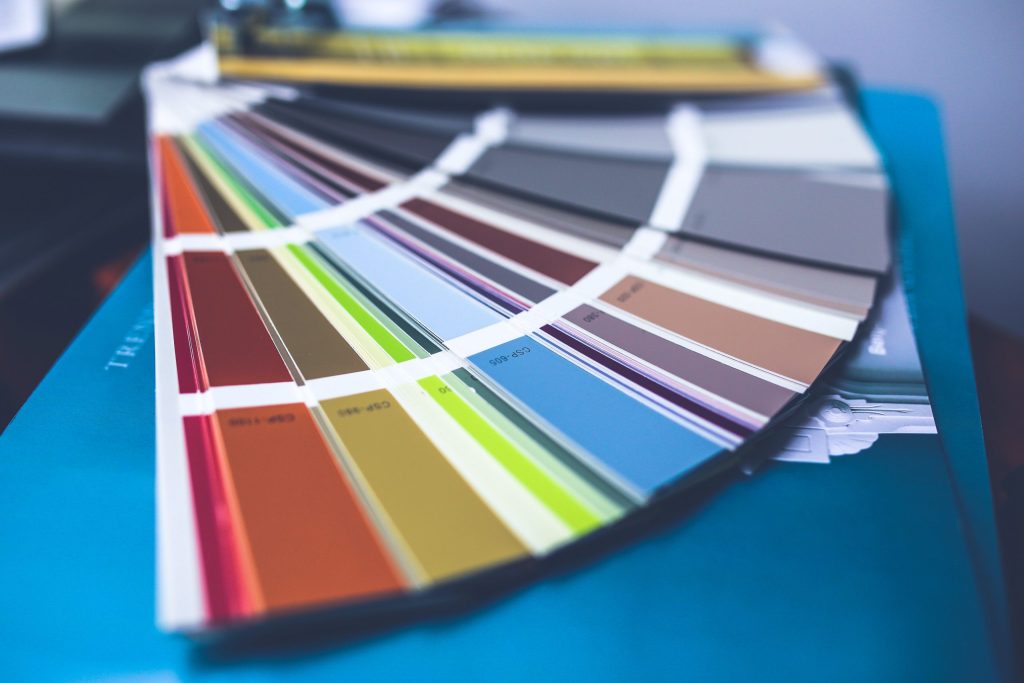
3. Fonts: Fonts can convey your brand’s personality and tone. Select legible fonts that reflect your brand’s style. Consider using a combination of fonts to create visual interest and hierarchy in your design.
4. Design Elements: Use design elements unique to your brand. These could include patterns, icons, or illustrations that visually represent your products, services, or values. These elements will make your business card memorable and reinforce your brand image.
5. Taglines or Slogans: If you have a memorable tagline or slogan, consider incorporating it into your business card design. A well-crafted tagline or slogan can communicate your brand message effectively and leave a lasting impact on your recipients.
6. Consistency: Maintain brand consistency across all marketing materials, including your business cards. Ensure that your branding elements, such as colors, fonts, and logo placement, are consistent with your other marketing collateral. Consistency helps reinforce your brand identity and improves brand recognition.
Incorporating these branding elements into your business card design can create a strong visual impact, increase brand recognition, and leave a lasting impression on recipients.
Strategic Content Placement for Maximum Impact
Strategic content placement is critical to creating maximum impact and effectively conveying your brand message when designing business cards. By organizing your information visually appealingly, you can ensure that your business cards leave a lasting impression on recipients.
One of the most essential elements of content placement is the positioning of your contact information. Prominently display your name, job title, phone number, email address, and website. These details should be easily readable and accessible, allowing potential clients or customers to reach out to you quickly.
Additionally, consider incorporating branding elements such as your logo, tagline, or brand colors into the design of your business card. This helps to reinforce your brand image and make a memorable impression.
Another tip for effective content placement is to prioritize the most critical information. Consider what key details you want to highlight and ensure they are easily noticeable. Consider using bold or larger fonts for crucial information, such as your name or company name, to draw attention to these elements.
Finally, consider the overall layout and design of your business card. Effectively utilize negative space to create a clean and uncluttered look. Pay attention to the alignment of text and graphics, ensuring a cohesive and professional appearance.
By carefully considering the strategic placement of your content, you can maximize the impact of your business cards and create a lasting impression on potential clients or customers.
Embracing Digital Business Cards
In today’s fast-paced, tech-driven world, digital business cards are gaining popularity as a modern complement to traditional ones. They combine the personal touch of networking with the convenience and efficiency of digital technology. Here’s how they can enhance your branding:
1. Always Updated, Always Accessible
Unlike traditional cards, digital business cards can be updated instantly. No more worrying about outdated phone numbers or email addresses—they keep your information current and accessible.
2. Eco-Friendly Branding
Gen Z and eco-conscious professionals appreciate sustainability. Digital cards align with environmentally friendly practices, reducing paper waste while still making a memorable impact.
3. Easy Sharing and Integration
Share your card with a simple tap or scan. Many platforms allow you to integrate digital cards with your email signature, social media profiles, or direct QR codes on traditional cards, bridging the gap between physical and digital branding.
4. Analytics and Engagement Tracking
With digital cards, you can often track interactions—like how many people viewed or saved your information. This adds an analytical layer to your networking efforts, helping you refine your approach.
Pro Tip: Consider adding a QR code to your traditional card that links directly to your digital card. It’s a great way to blend the best of both worlds and appeal to tech-savvy contacts.
Encouraging Engagement: Adding Calls to Action on Business Cards
When designing business cards, it’s crucial to go beyond simply providing contact information. Adding calls to action can encourage recipients to take the next step and engage with your brand. One effective way to do this is by incorporating QR codes.
QR codes are scannable codes that allow users to quickly access websites, social media profiles, or other digital content. They make your business card a powerful tool for digital engagement. Placing a QR code on your business card provides a convenient and interactive way for recipients to connect with your brand.
For example, you could create a QR code linking to your company’s website or online portfolio, ensuring your card is a direct gateway to your digital presence. This allows potential clients or customers to easily explore your products or services without manually typing in a URL. QR codes can also direct recipients to your social media pages, encouraging them to follow or engage with your brand online.
“Aside from QR codes, there are many other creative ways to add calls to action on your business cards. Consider incorporating a catchy slogan or tagline that prompts recipients to visit your website, sign up for a newsletter, or take advantage of a special promotion. You could also include a specific call to action, such as”Call Now for a Free Consultation” or”Scan to Receive a Discount Code.”Aside from QR codes, there are many other creative ways to add calls to action on your business cards. Consider incorporating a catchy slogan or tagline that prompts recipients to visit your website, sign up for a newsletter, or take advantage of a special promotion. You could also include a specific call to action, such as “Call Now for a Free Consultation” or “Scan to Receive a Discount Code.”
Remember, the goal is to capture recipients’ attention and entice them to engage with your brand further. By adding calls to action on your business cards, you create opportunities for meaningful interactions and conversions, a vital tip for effective small business marketing.
Utilizing the Back of Your Business Card: A Canvas for Creativity
In today’s competitive business landscape, making a lasting impression with your business card is essential. While the front of the card is typically reserved for important contact information and branding elements, the back provides a blank canvas for creativity, additional information, and a chance to make your card stand out.
One creative idea is to use the back of your business card to convey additional information about your products or services. For example, you can include a brief description of your offerings, highlight key features, or showcase customer testimonials. This gives recipients valuable information and a reason to hold onto their cards.
Another way to utilize the back of your business card is to showcase portfolio samples or relevant images. Suppose you’re a graphic designer, photographer, or artist. In that case, this is an excellent opportunity to display your work and give potential clients a glimpse of your talent. Using a business card template designed for creatives can enhance this effect. You can also use this space to include a QR code that links to your online portfolio or website for easy access to more examples of your work.
Adding a personal touch to your business card can also make a lasting impression. Consider incorporating a handwritten note or a personalized message on the back of the card. This small gesture shows that you value personal connections and attention to detail, which can leave a positive and memorable impact on the recipient.
When designing the back of your business card, it’s essential to maintain a cohesive look and feel with the front. This can be achieved using consistent branding elements such as colors, fonts, and logos. Remember that the back of your business card extends your brand identity, so ensure it aligns with your brand image.
By effectively utilizing the back of your business card, you can maximize the impact of this small but powerful marketing tool. Whether you convey additional information, showcase your work, or add a personal touch, the back of your business card presents endless creative possibilities to make a lasting impression on potential clients and customers.
Maintaining Brand Consistency Across All Marketing Materials
Consistency is critical to effective branding—maintaining consistency across all marketing materials, including business cards. By, is important doing so, businesses can reinforce their brand image, improve brand recognition, and establish a solid and cohesive visual identity.
One of the first steps in maintaining brand consistency is to ensure that all branding elements are consistent across different marketing materials. This includes using the same logo, colors, fonts, and design elements on your business cards as you do on your website, social media profiles, and other marketing materials. This consistency helps create a unified and recognizable brand presence.
Another critical aspect of maintaining brand consistency is to use consistent messaging on your business cards. The tone and language used on your business cards should align with your brand’s overall messaging and voice. This helps create a cohesive brand narrative and ensures your business cards convey the right message to your target audience.
In addition, it’s crucial to pay attention to the visual aspects of your business cards. Ensure that your business cards’ layout and design are consistent with your brand’s visual identity. This includes using the same color schemes, typography, and imagery representative of your brand.
Lastly, don’t forget to maintain consistency in the quality and presentation of your business cards. Opt for high-quality materials and finishes that align with your brand’s image. Whether it’s a sleek matte finish or a luxurious foil stamping, the materials and finishes you choose should reflect the quality and professionalism of your brand. Incorporating a business card template can streamline this process.
Maintaining brand consistency across all marketing materials, including business cards, is essential for effective branding. By using consistent branding elements, colors, messaging, and visual presentation, businesses can reinforce their brand image, improve brand recognition, and leave a lasting impression on their target audience.
Avoiding Common Pitfalls: Best Practices for Business Card Branding
When branding your business cards, it’s crucial to avoid common pitfalls that can undermine your efforts. Following some best practices and practical tips, you can create business cards that effectively represent your brand and leave a positive and lasting impression on recipients.
First and foremost, best practices for branding on business cards involve ensuring consistency with your overall brand image. Use the same colors, fonts, and design elements in your other marketing materials. This helps to reinforce your brand identity and make your business cards instantly recognizable.
Another important consideration is the branding techniques for business card success. It’s essential to prioritize the relevant information and make it easily readable. Include only the necessary contact details and key messaging. Cluttered or overcrowded business cards can confuse and overwhelm recipients, so keep it simple and concise.
Also, while Canva and other free design apps are great for setting up your designs, we definitely recommend hiring a professional to design your cards. We offer bcard design starting at $50, and we can create the card of your dreams. You can guarantee you will cover all these key design points.
Remember, best practices for branding on business cards also involve selecting suitable materials and finishes. Choose a high-quality paper stock and consider adding special finishes such as silk coating or spot UV to enhance the perceived value of your cards.
Lastly, remember to review your business cards for errors or typos. Proofreading is a crucial step in ensuring a professional and polished final product. Double-check all the information, including phone numbers, email addresses, and social media links, before sending your business cards to print.
By following these best practices for branding on business cards and avoiding common pitfalls, you can create business cards that effectively represent your brand, make a strong impression, and help you stand out in a competitive market.




